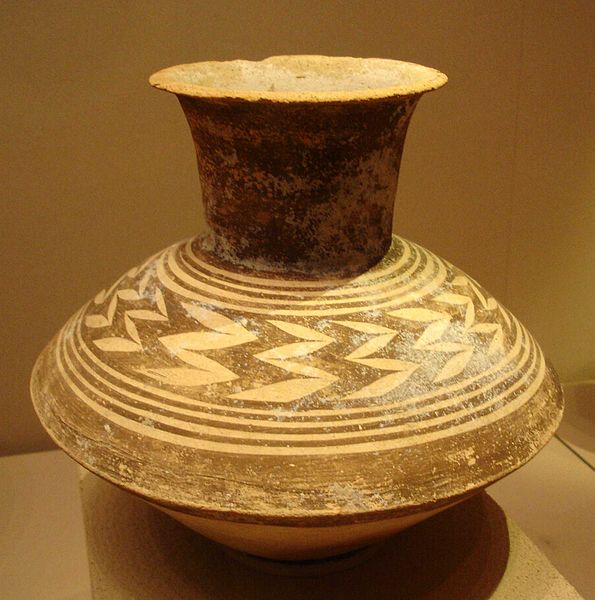
| UBAID PERIOD
Map of Iraq showing important sites that were occupied during the Ubaid period
Ubaid period Geographical
range : Mesopotamia
The Ubaid period (c. 6500–3800 BC) is a prehistoric period of Mesopotamia. The name derives from Tell al-'Ubaid where the earliest large excavation of Ubaid period material was conducted initially by Henry Hall and later by Leonard Woolley.
In South Mesopotamia the period is the earliest known period on the alluvial plain although it is likely earlier periods exist obscured under the alluvium. In the south it has a very long duration between about 6500 and 3800 BC when it is replaced by the Uruk period.
In Northern Mesopotamia the period runs only between about 5300 and 4300 BC. It is preceded by the Halaf period and the Halaf-Ubaid Transitional period and succeeded by the Late Chalcolithic period.
History
of research :
Dating,
extent and periodization :
Ubaid 3 artifacts (5300 – 4700 BC) :
Ubaid III pottery jar, 5300 – 4700 BC Louvre Museum AO 29611
Ubaid III pottery, 5300 – 4700 BC Louvre Museum AO 29598
Ubaid III campaniform pottery 5300 – 4700 BC Louvre Museum
Ubaid III pottery 5300 – 4700 BC. Louvre Museum AO 29616 Ubaid 4 artifacts (4700 – 4200 BC) :
Ubaid IV pottery gobelet, 4700 – 4200 BC Tello, ancient Girsu. Louvre Museum
Ubaid IV pottery jars 4700 – 4200 BC Tello, ancient Girsu, Louvre Museum
Ubaid IV pottery 4700 – 4200 BC Tello, ancient Girsu, Louvre Museum AO 15338
Female figurines Ubaid IV, Tello, ancient Girsu, 4700 – 4200 BC. Louvre Museum AO15327
Ubaid culture (in orange), next to Samarra, Halaf and Hassuna cultures
Influence to the north :
During the late Ubaid period around 4500–4000 BC, there was some increase in social polarization, with central houses in the settlements becoming bigger. But there were no real cities until the later Uruk period.
Ubaid
influence in the Persian Gulf area :
Spreading from Eridu, the Ubaid culture extended from the Middle of the Tigris and Euphrates to the shores of the Persian Gulf, and then spread down past Bahrain to the copper deposits at Oman.
Obsidian
trade :
In Dosariyah, nine samples of Ubaid-associated obsidian were analyzed. They came from eastern and northeastern Anatolia, such as from Pasinler, Erzurum, as well as from Armenia. The obsidian was in the form of finished blade fragments.
Decline
of influence :
Numerous examples of Ubaid pottery have been found along the Persian Gulf, as far as Dilmun, where Indus Valley Civilization pottery has also been found.
Description :
Large buildings, implying centralized government, started to be made. Eridu Temple, final Ubaid Ubaid culture is characterized by large unwalled village settlements, multi-roomed rectangular mud-brick houses and the appearance of the first temples of public architecture in Mesopotamia, with a growth of a two tier settlement hierarchy of centralized large sites of more than 10 hectares surrounded by smaller village sites of less than 1 hectare. Domestic equipment included a distinctive fine quality buff or greenish colored pottery decorated with geometric designs in brown or black paint. Tools such as sickles were often made of hard fired clay in the south, while in the north stone and sometimes metal were used. Villages thus contained specialised craftspeople, potters, weavers and metalworkers, although the bulk of the population were agricultural labourers, farmers and seasonal pastoralists.
During the Ubaid Period (5000–4000 BC), the movement towards urbanization began. "Agriculture and animal husbandry [domestication] were widely practiced in sedentary communities". [citation needed] There were also tribes that practiced domesticating animals as far north as Turkey, and as far south as the Zagros Mountains. The Ubaid period in the south was associated with intensive irrigated hydraulic agriculture, and the use of the plough, both introduced from the north, possibly through the earlier Choga Mami, Hadji Muhammed and Samarra cultures.
Early Ubaid pottery, 5100 – 4500 BC, Tepe Gawra. Louvre Museum DAO 3
Bowl; mid 6th – 5th millennium BC; cermaic; 5.08 cm; from the Ubaid period
Ubaid period pottery, Susa I, 4th millennium BC Society :
Northern expansion of the Ubaid culture
Two female figurines with bitumen headdresses, ceramic. Ur, Ubaid 4 period, 4500 – 4000 BCE The Ubaid period as a whole, based upon the analysis of grave goods, was one of increasingly polarised social stratification and decreasing egalitarianism. Bogucki describes this as a phase of "Trans-egalitarian" competitive households, in which some fall behind as a result of downward social mobility. Morton Fried and Elman Service have hypothesised that Ubaid culture saw the rise of an elite class of hereditary chieftains, perhaps heads of kin groups linked in some way to the administration of the temple shrines and their granaries, responsible for mediating intra-group conflict and maintaining social order. It would seem that various collective methods, perhaps instances of what Thorkild Jacobsen called primitive democracy, in which disputes were previously resolved through a council of one's peers, were no longer sufficient for the needs of the local community.
Ubaid culture originated in the south, but still has clear connections to earlier cultures in the region of middle Iraq. The appearance of the Ubaid folk has sometimes been linked to the so-called Sumerian problem, related to the origins of Sumerian civilisation. Whatever the ethnic origins of this group, this culture saw for the first time a clear tripartite social division between intensive subsistence peasant farmers, with crops and animals coming from the north, tent-dwelling nomadic pastoralists dependent upon their herds, and hunter-fisher folk of the Arabian littoral, living in reed huts.
Stein and Özbal describe the Near East oecumene that resulted from Ubaid expansion, contrasting it to the colonial expansionism of the later Uruk period. "A contextual analysis comparing different regions shows that the Ubaid expansion took place largely through the peaceful spread of an ideology, leading to the formation of numerous new indigenous identities that appropriated and transformed superficial elements of Ubaid material culture into locally distinct expressions."
The earliest evidence for sailing has been found in Kuwait indicating that sailing was known by the Ubaid 3 period
Gallery :
Terracotta stamp seal with Master of Animals motif, Tello, ancient Girsu, End of Ubaid period, Louvre Museum AO14165. Circa 4000 BC
Drop-shaped (tanged) pendant seal and modern impression. Quadrupeds, not entirely reduced to geometric shapes, ca. 4500–3500 BC. Late Ubaid - Middle Gawra periods. Northern Mesopotamia
Stamp seal and modern impression: horned animal and bird. 6th–5th millennium BC. Northern Syria or southeastern Anatolia. Ubaid period. Metropolitan Museum of Art
Pottery jar from Late Ubaid Period Source :
https://en.wikipedia.org/ |
|||||||||||||||||||
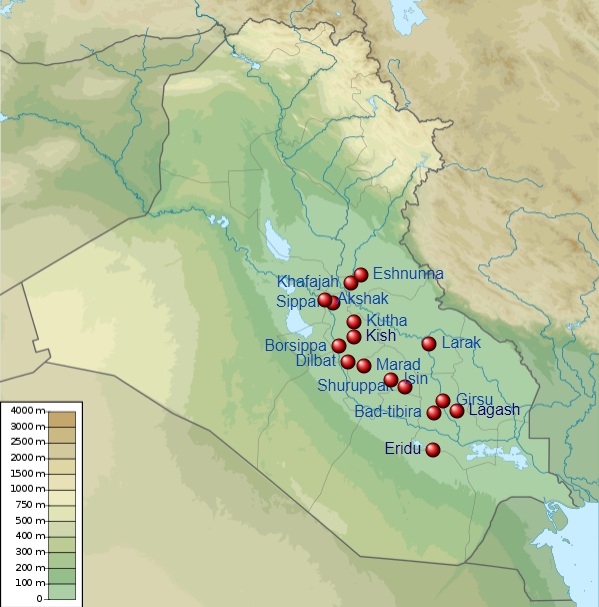
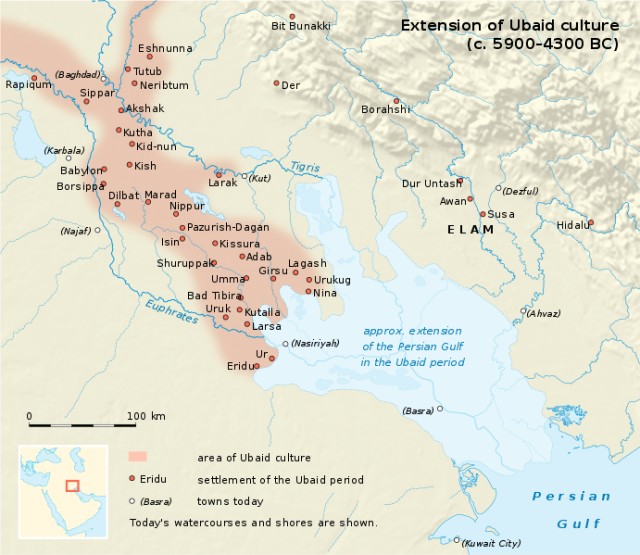
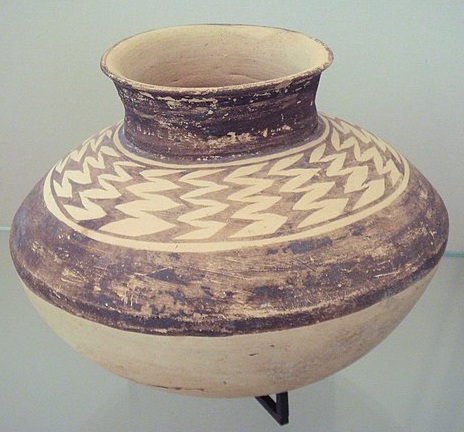
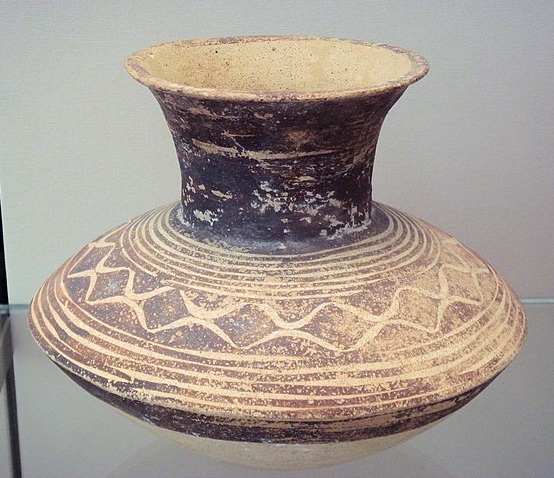
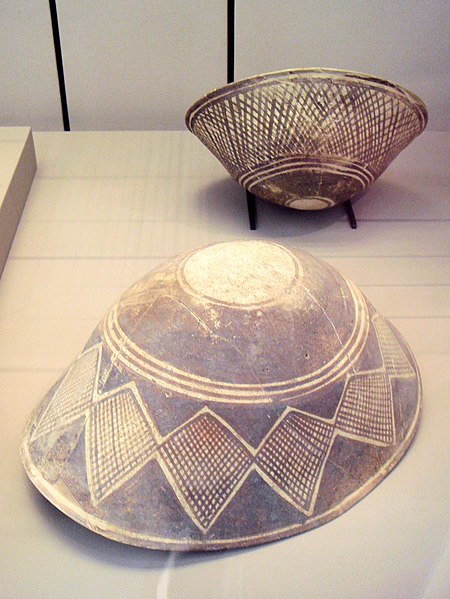
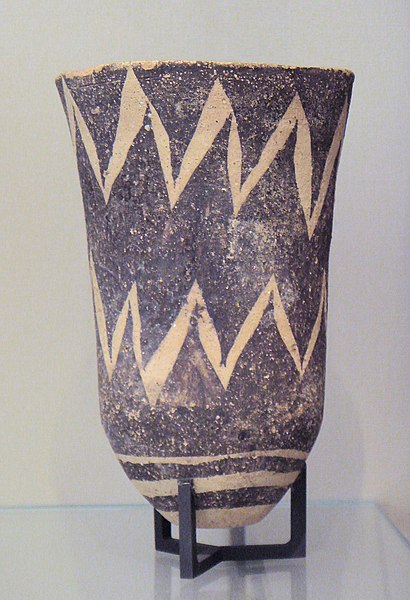
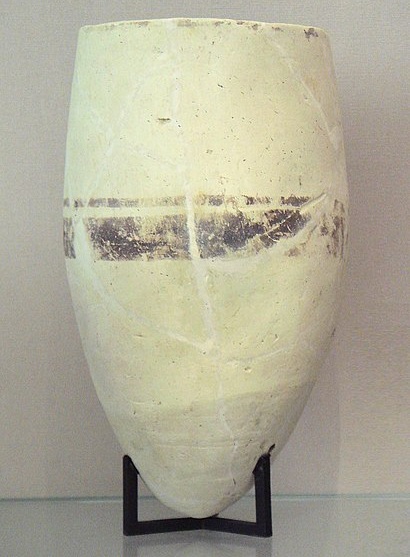
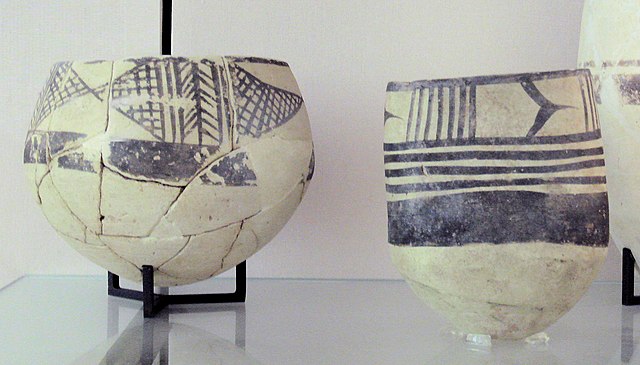
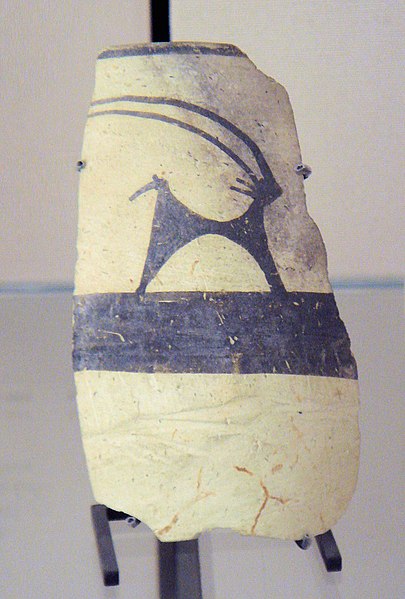
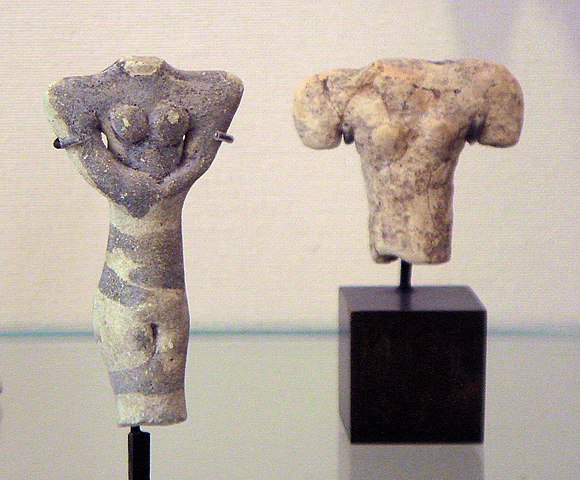
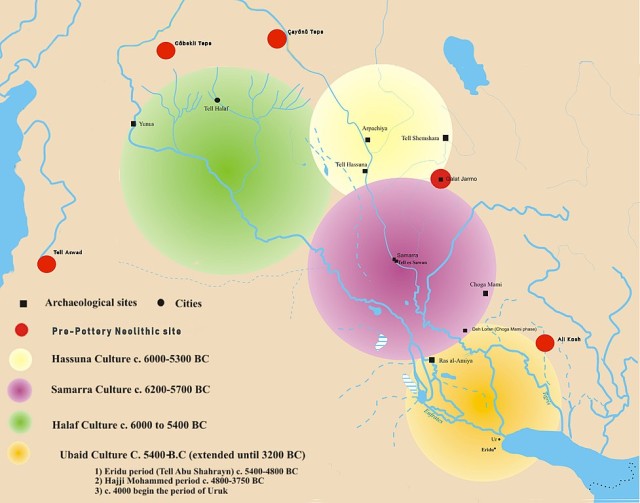
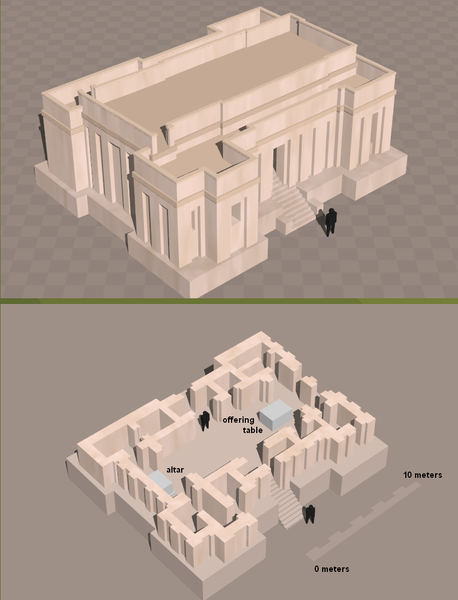
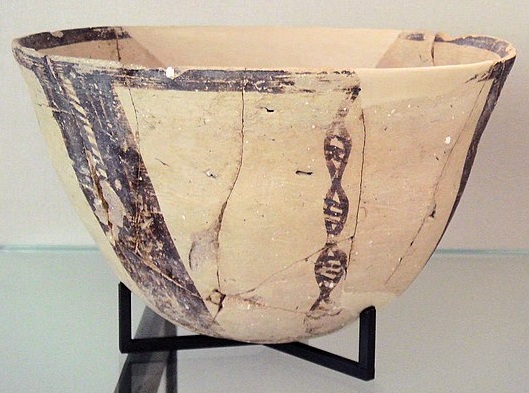
.jpg)
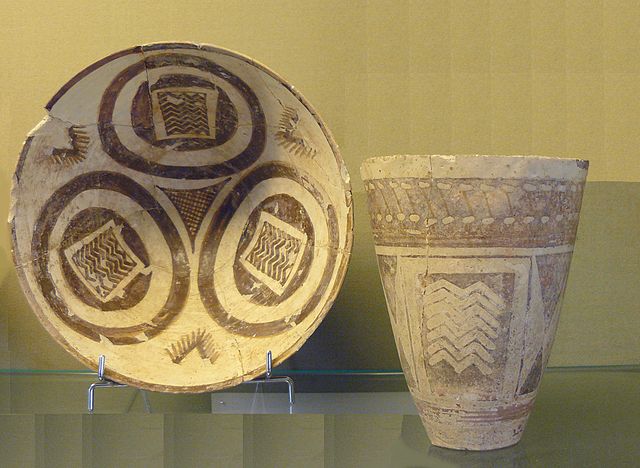
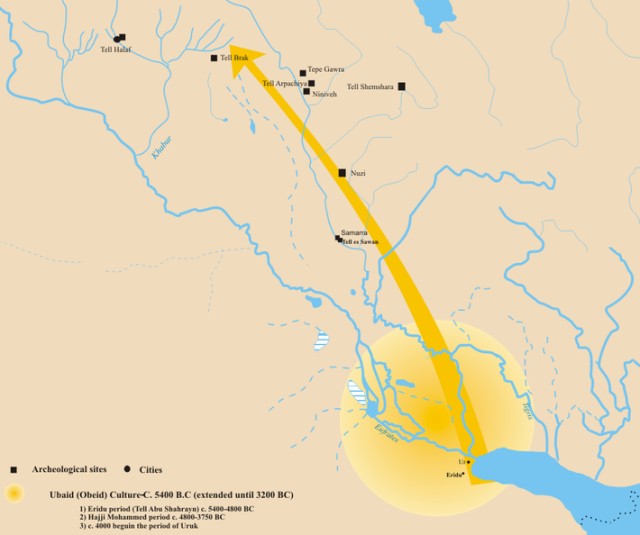
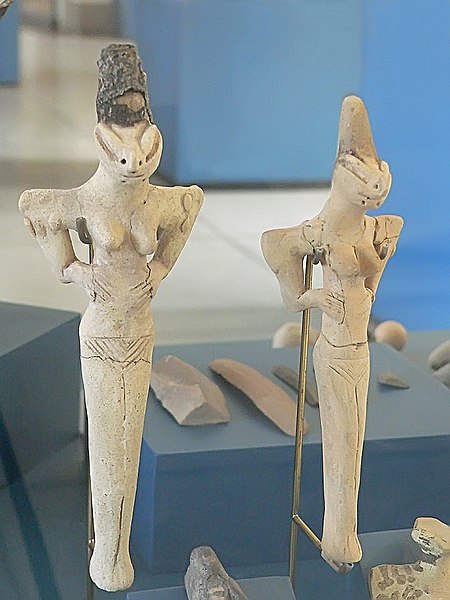
.jpg)
_pendant_seal_and_modern_impression._Quadrupeds,_ca._4500%963500_B.C._Late_Ubaid_-_Middle_Gawra._Northern_Mesopota.jpg)

